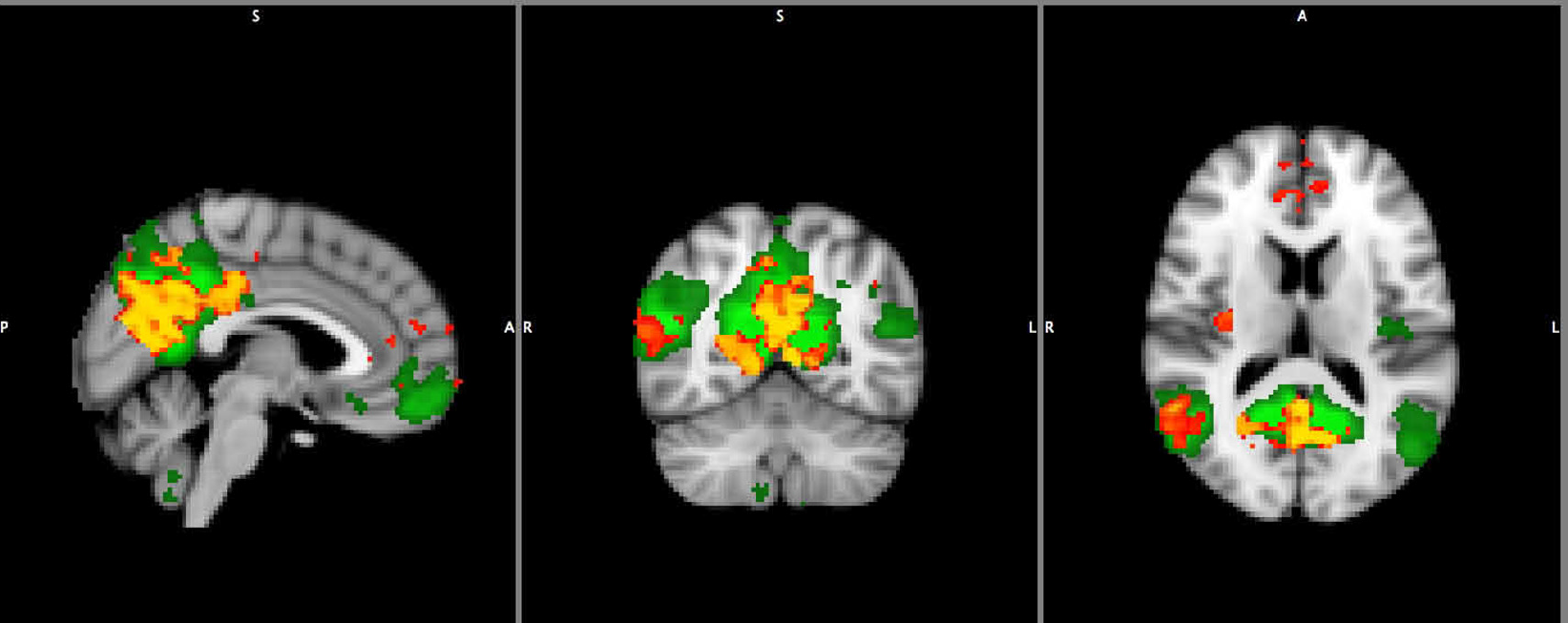No CrossRef data available.
Published online by Cambridge University Press: 15 April 2020
HIV is currently considered a chronic disease where up to two thirds of patients present HIV-associated Neurocognitive Disorders. Nevertheless, neural correlates of HAND are still poorly understood.
To compare the Default Mode Network (DMN) in a sample of HIV individuals with and without HAND.
Characterize functional neural correlates of HAND.
20 HIV+ patients signed informed-consent. HAND was diagnosed using NIMH and NINDS criteria. For each subject, a T2* EPI TR=3s, 120 volumes, 3x3x4mm were obtained in a Philips 1.5T MR; MRI data was preprocessed and Independent Component Analysis (ICA) performed using the FMRIB’s Software Library (FSL). Group-ICA was performed on denoised data and DMN regressed using Dual Regression. Non-parametric statistical maps were obtained using Randomize (FSL).
HAND+ group’s DMN shows a tendency (corrected) to right hemisphere lateralization when compared against the group (fig. 1: Projected over the MNI-152 reference brain, in green, the DMN of our cohort (z-stat>3); over, in red, the contrast of HAND against the group).

Our results show lateralization of DMN associated to HAND diagnosis; we hypothesize this represents interhemispherical disconnection, concordant with subcortical impairments described in literature. Further enrolling of patients and structural DTI analysis is needed.
Comments
No Comments have been published for this article.